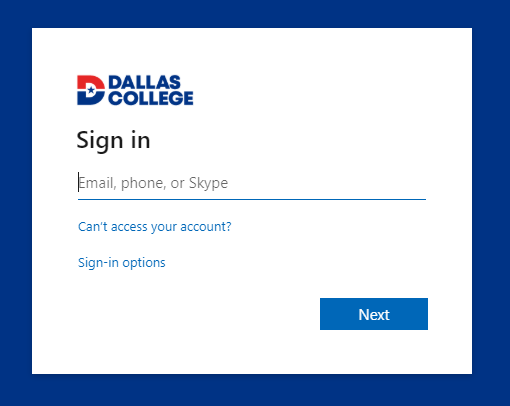Today, cybersecurity isn’t just an IT issue—it’s a vital aspect of modern life. With the escalating threats of hacking, phishing, and ransomware attacks, safeguarding digital assets has become non-negotiable. So, let’s delve into one of the most innovative solutions yet: Endpoint Application Isolation and Containment Technology.
Why Is Cybersecurity Essential?
The Rising Cyber-Attack Stats
There’s a chilling fact we can’t ignore—cyber-attacks are on the rise. No sector is safe, and the consequences can be catastrophic. In 2021 alone, ransomware attacks escalated by 485%, according to Cybersecurity Ventures.
Businesses at Risk
It’s not just about losing data. The implications of cyber attacks extend far beyond, eroding customer trust and even leading to legal repercussions. That’s why robust cybersecurity isn’t a luxury—it’s a necessity.
Understanding the Endpoint
Defining Endpoint in Cybersecurity
When we talk about endpoints in cybersecurity, we’re referring to devices like computers, mobiles, and servers that connect to a network. These are your front doors and windows in the digital world.
Why Endpoints Are Vulnerable
Sadly, endpoints are often the weakest link in the cybersecurity chain. They can be exploited through phishing emails, malicious software, and even human error.
Introduction to Endpoint Application Isolation
How It Works
Endpoint application isolation functions as a barrier between your system and potentially harmful content. It prevents malware from corrupting your system by isolating the application from the rest of your network.
Comparison with Traditional Security Measures
Think of it as a VIP security detail compared to a regular bouncer at a club. Endpoint application isolation doesn’t just stop threats at the door—it ensures they never reach the floor.
Containment Technology Explained
Its Role in Cybersecurity
Containment technology takes the isolation strategy a notch higher. It’s like a fail-safe mechanism, further trapping and analyzing any malicious software for threats.
Difference between Isolation and Containment
If isolation is the wall, then containment is the moat around the wall. Containment traps potential threats in a ‘sandbox’ where they can do no harm.
The Beauty of Synergy
Endpoint Application Isolation meets Containment Technology
The fusion of endpoint application isolation and containment technology is like an impenetrable fortress. It not only keeps threats at bay but learns and adapts to new kinds of threats as well.
Benefits in a Nutshell
With this integrated approach, your system becomes virtually unbreachable. It provides real-time security updates, low false positives, and a highly reactive defense mechanism.
Key Features of Endpoint Application Isolation and Containment Technology
Sandboxing
This is the heart of containment technology. Sandboxing isolates suspicious programs in a separate environment, preventing them from affecting your main system.
Micro-virtualization
This allows the technology to create tiny virtual environments for every task. It ensures that any malicious activity is confined to that specific environment and can’t spread.
How it Integrates with Existing Systems

Seamless Integration
One of the standout features is its ability to integrate effortlessly with your existing systems, negating the need for an overhaul.
The Need for Minimal Configuration
Minimal configuration means fewer headaches. Endpoint application isolation and containment technology is designed to be user-friendly and easy to set up.
Real-life Applications
Healthcare Sector
In healthcare, patient records are gold. This technology ensures that these sensitive files remain secure.
Finance and Banking
Financial institutions are attractive targets for hackers. Endpoint application isolation and containment technology helps to secure confidential financial transactions.
Case Studies
Healthcare Industry Success Story
The adoption of this technology in a hospital in New York resulted in zero malware infections in a year—a significant turnaround from 45 incidents in the previous year.
A Turnaround for a Finance Firm
A financial firm in London faced frequent cyber threats until they adopted endpoint application isolation and containment technology. The result? A whopping 80% reduction in cyber incidents.
Cost and Affordability
How to Budget
Like any other investment, there are upfront costs. However, the long-term benefits far outweigh these initial expenses.
Return on Investment
Companies have reported an average ROI of 150% within the first year of implementing this technology, making it a worthy investment.
The Future of Endpoint Application Isolation and Containment Technology
Upcoming Trends
We are on the cusp of a revolution. Advancements like AI integration and machine learning will continue to bolster this technology’s capabilities.
The Future is Bright
There’s no looking back. Endpoint application isolation and containment technology is not just a buzzword—it’s the future of cybersecurity.
Frequently Asked Questions
What is endpoint application isolation?
Endpoint application isolation is a cybersecurity measure that isolates applications from the rest of the system to prevent potential threats.
How does containment technology complement isolation?
Containment technology acts as a secondary barrier, further trapping and analyzing potential threats to ensure they are harmless.
Is this technology costly?
While there are initial costs, the long-term benefits, such as reduced cyber threats and potential savings on data recovery, make it a cost-effective solution.
Can this technology integrate with my existing systems?
Yes, one of the key features of endpoint application isolation and containment technology is its ability to integrate seamlessly with existing systems.
What sectors can benefit the most from this technology?
Industries like healthcare, finance, and e-commerce, where data security is crucial, stand to benefit the most.
Is this a long-term solution for cybersecurity?
Absolutely. With continuous advancements and upgrades, this technology is here to stay.
Conclusion
In a digital age rife with cyber threats, the emergence of endpoint application isolation and containment technology offers a glimmer of hope. It’s time to embrace the future of cybersecurity. With this comprehensive solution, we can finally take a long-awaited sigh of relief.











